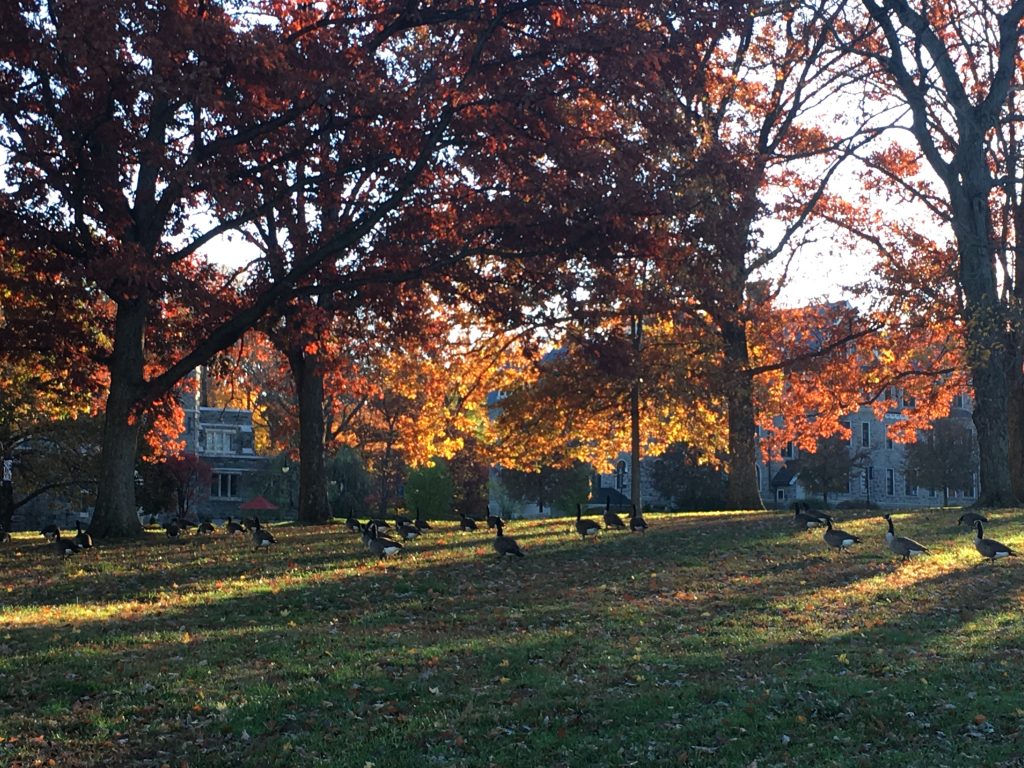
Fall on Bryn Mawr’s campus is easily the most beautiful time of the year. The leaves turn, the air is crisp, and on ever-dwindling sunny days countless students can be found stretched out on blankets soaking up the last of the summer’s warmth before winter sets in.

But you’ve seen all that before! Today we’re going to ignore the gorgeous blue skies and fall colors and plush grass to talk about a part of campus I can guarantee no one has ever talked about:
The surprisingly robust variety of mushrooms on campus.
“But Alex,” I hear you say, “They’re just mushrooms, who cares?”
Well, I do. Where I come from there are only two varieties of mushrooms: the white ones and the brown ones. Suburban Houston just isn’t a bastion of biodiversity. On the other hand, while the Main Line is technically also a suburb, it’s semi-wooded with all kinds of flora and fauna you’d never find in a big city.
The interesting thing about fungi is that they’re neither flora nor fauna. Like plants, they often grow in soil and produce fruit bodies (that’s the mushroom or mold that you see). However, their cell walls are made of chitin, which is the same substance that makes up the exoskeletons of insects. Also, fungi secrete enzymes that digest their food, while plants make their own or simply absorb nutrients from the soil. Overall, fungi are more closely related to animals than plants. Weird, right?
It gets better. We think of fungi as decomposers, but they actually have a much more complex place in the ecosystem. Nearly 80% of earth’s plants have a symbiotic relationship with underground networks of fungi called mycorrhiza. Some plants are completely dependent on their mycorrhizal networks; orchids can’t even reproduce without them. In exchange for sugars from the plant, the fungal networks can access and break down complex nutrients, protect plants from pathogens and harmful insects, or even pass along chemical messages between plants like a nervous system.
So, now that we’ve established that mushrooms are super cool, allow me to take you on a tour of Bryn Mawr College’s fascinating fungi:
1. Located in the hollow of a tree on Merion drive that has since been cut down, this was one of the first mushrooms I found at Bryn Mawr. Google tells me it might be a Mossy Maple Polypore. That’s a pathogenic fungus, which might explain why that tree was cut down. Personally, I just love the strange, spongy texture of the underside.
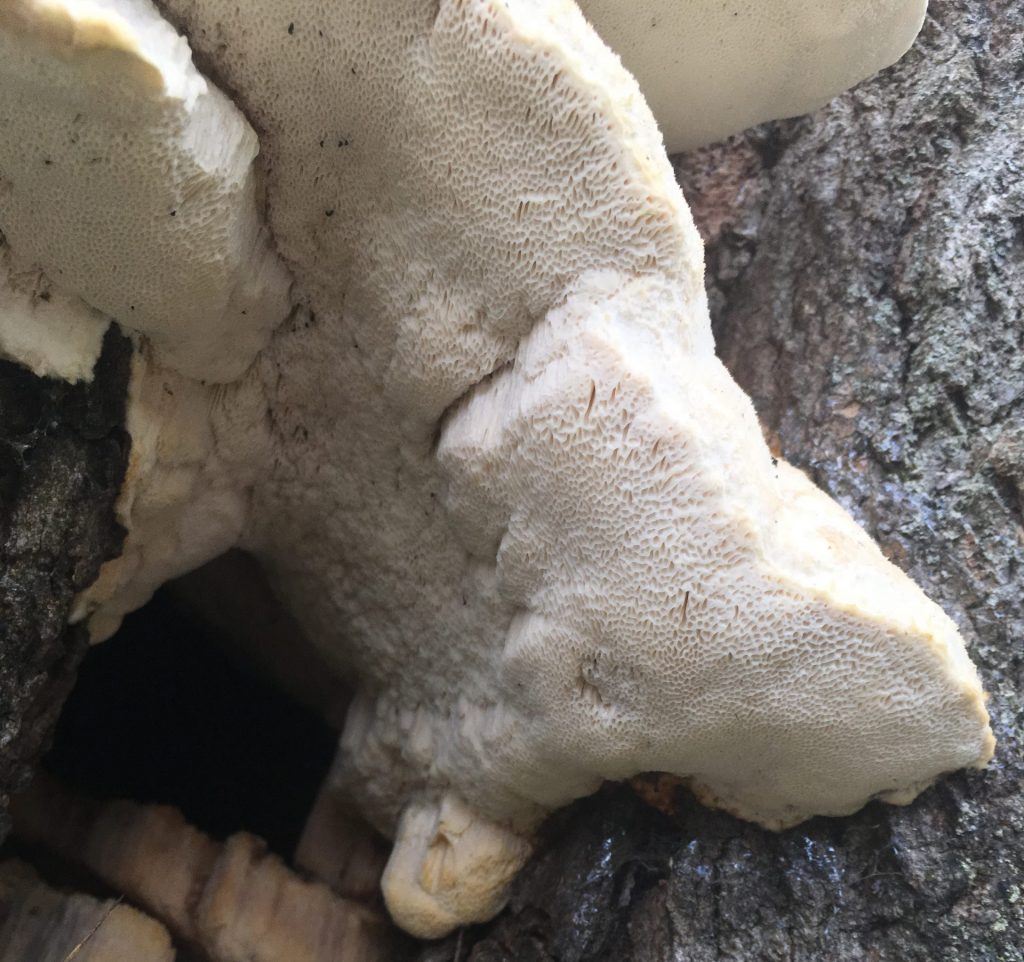
2. Also found on Merion drive my freshman year, these mushrooms looked incredibly striking on their rain-soaked stump. I believe the bottom type is called “Turkey Tail”, while the top one is “False Turkey Tail”. If nothing else, those names highlight why you shouldn’t eat mushrooms you find outside the grocery store, even if you think you know what they are.
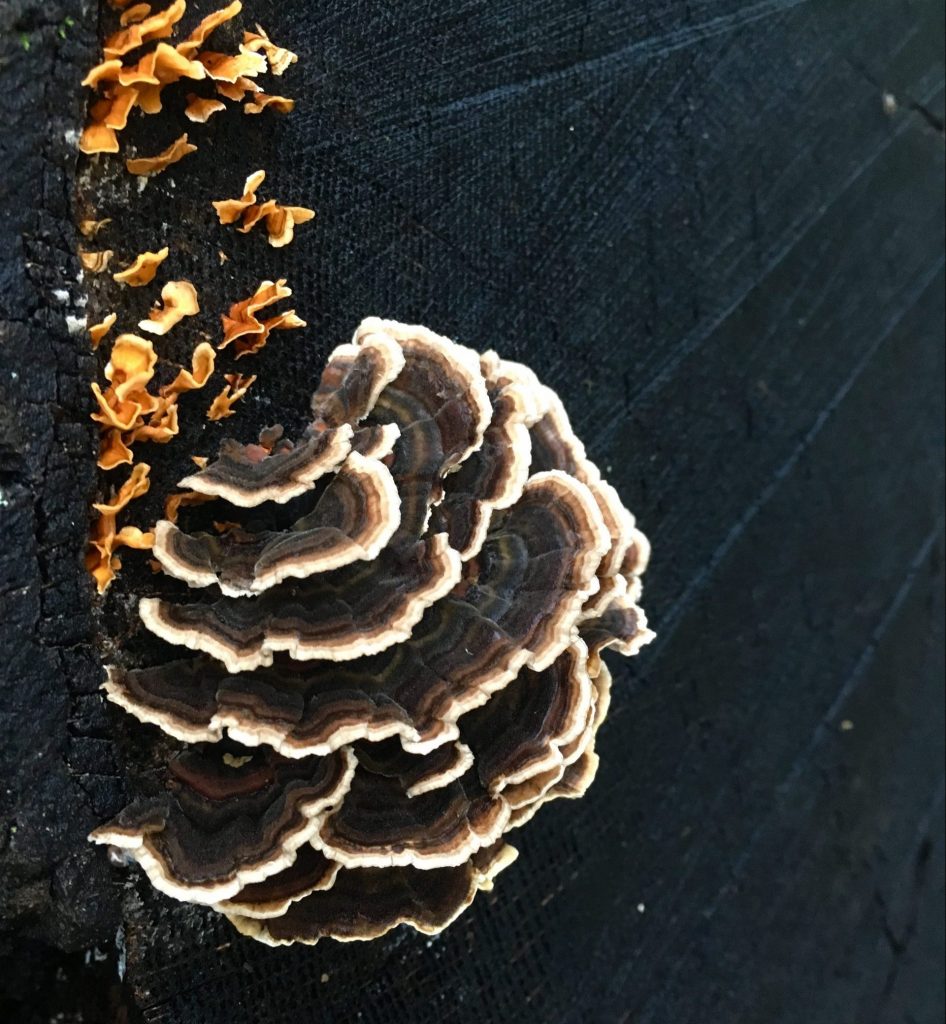
3. I spotted these in the mulch next to New Dorm. I think they’re Goldenhaired Inkcaps, but they could also be one of the hundred other inkcap varieties. Inkcaps are quite delicate, conditionally poisonous, but lovely to look at.

4. These were tucked in the roots of a tree by the stairs down to the athletic field. I’m not going to try to identify this one; “brown mushroom eastern pa” turns up far too many results on Google. That said, I love how they look like they’re hatching from eggs as they grow.

5. I spotted this beauty in the little wooded area next to the Schwartz gym. I thought it was a lost volleyball, but its actually a giant puffball mushroom! It was still in its edible stage when I found it, but as soon as puffballs go to spore they become poisonous.
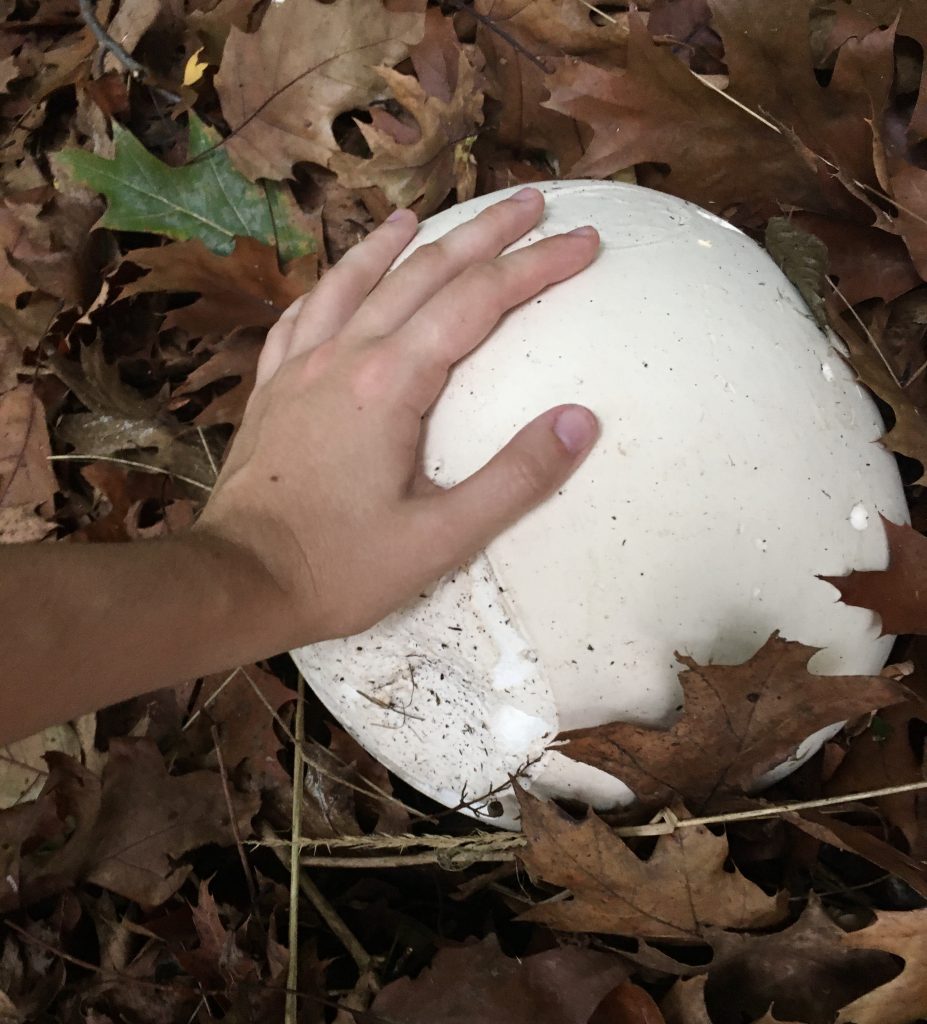
6. These were attached to a half-rotten stick sitting on the ground outside of Old Library. They’re Turkey Tails, which the same species as mushroom number one, but I included this picture because the orange tones contrast really nicely with the green lichen.
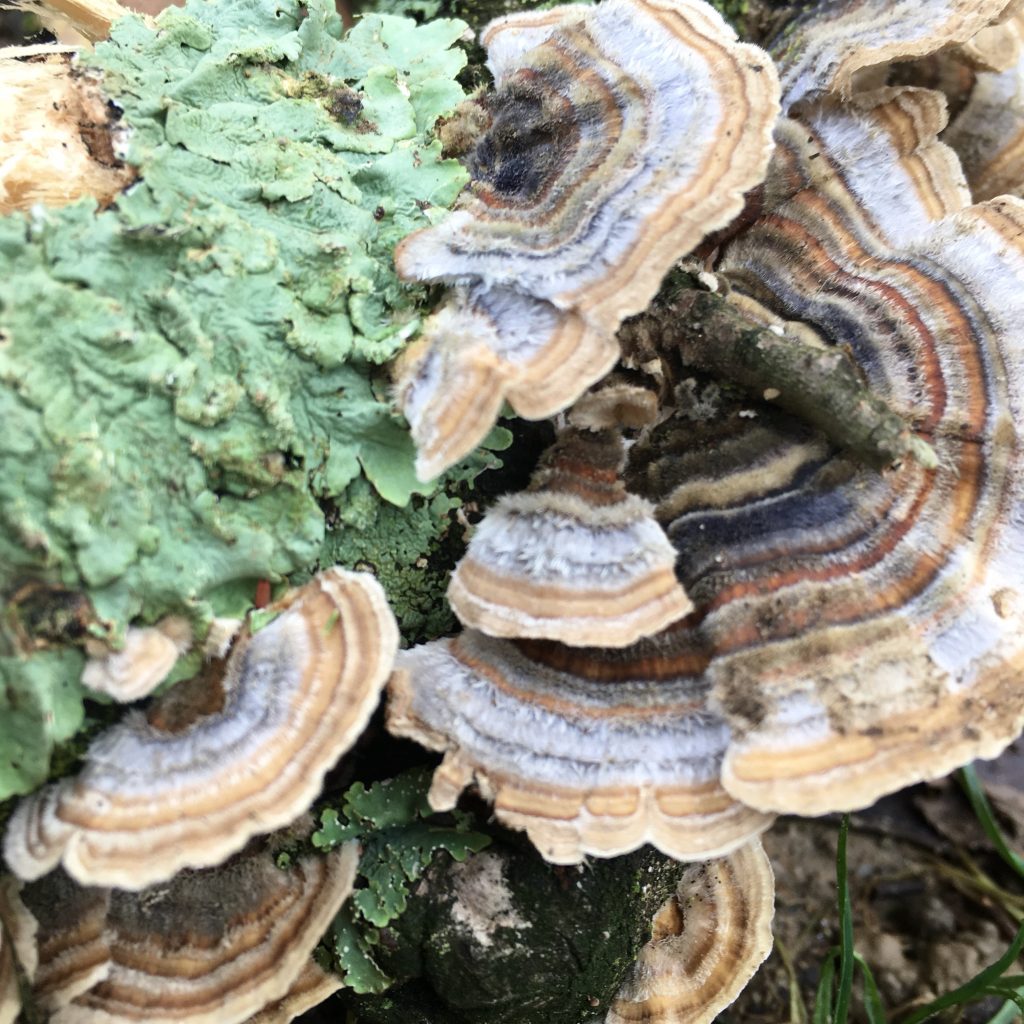
7. This is known as Hen-of-the-Woods, or maitake, which is a very distinct fungus that usually grows at the base of oak trees. I found this large cluster at one of the stumps outside Taylor hall. The USDA’s Field Guide to Common Macrofungi lists their edibility as “choice”, though at the bottom of the page is the ever present-disclaimer “DO NOT eat any mushroom unless you are absolutely certain of its identity”.
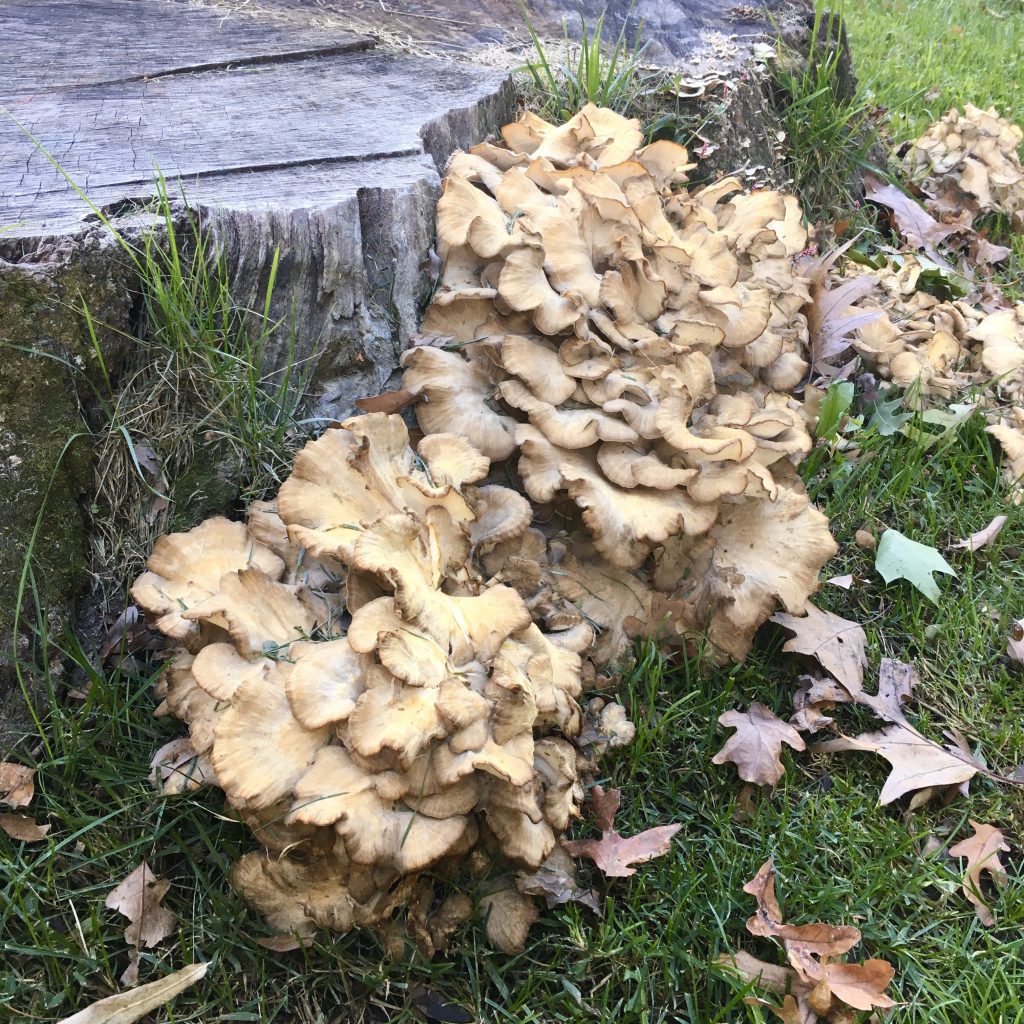
8. I’ve saved the best for last. This mushroom confounds me. I think it’s an Eastern Jack O’ Lantern mushroom, which is notable for being bioluminescent and poisonous. I’ve spotted it in the same place outside of Park for a few years, which means its mycelium (fungal root system) is incredibly healthy. What fascinates me is what it does to my phone camera.
To my eye it looks like this. An intense but ultimately unremarkable shade of burnt orange:
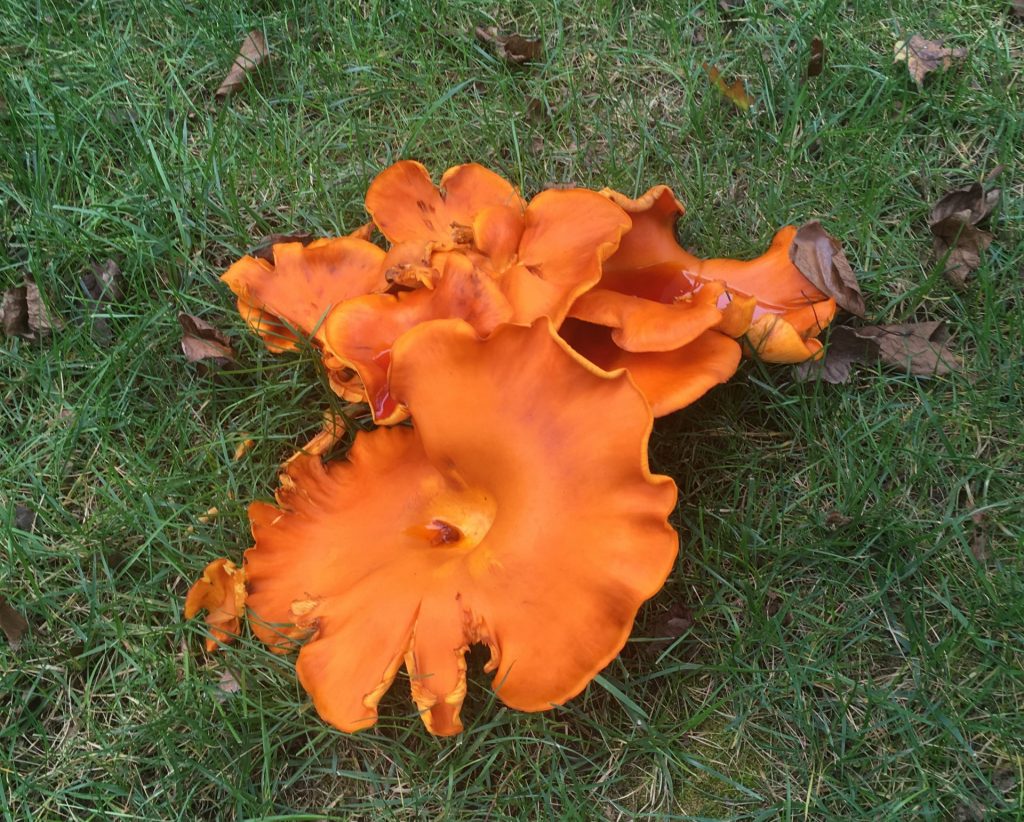
However, when I pass my phone camera over it, something about that shade of orange forces my camera to tint everything else in the shot blue.
Why does it do that? It’s not that orange, and I’ve never seen my phone do this to anything else. My only guess is that this mushroom’s bioluminescence is visible in daylight on a spectrum that I can’t see, but that my camera can pick up on. If any mycologists (mushroom scientists) are reading this, please comment your thoughts. This mushroom keeps me awake at night.
Thank you for following along on the most niche of campus beauty posts. I hope you all have a new appreciation for all the mushrooms on campus. This isn’t just a bit for the blog, by the way. These are the best of two-plus years of collected mushroom pictures.
And remember: Don’t eat strange mushrooms.
